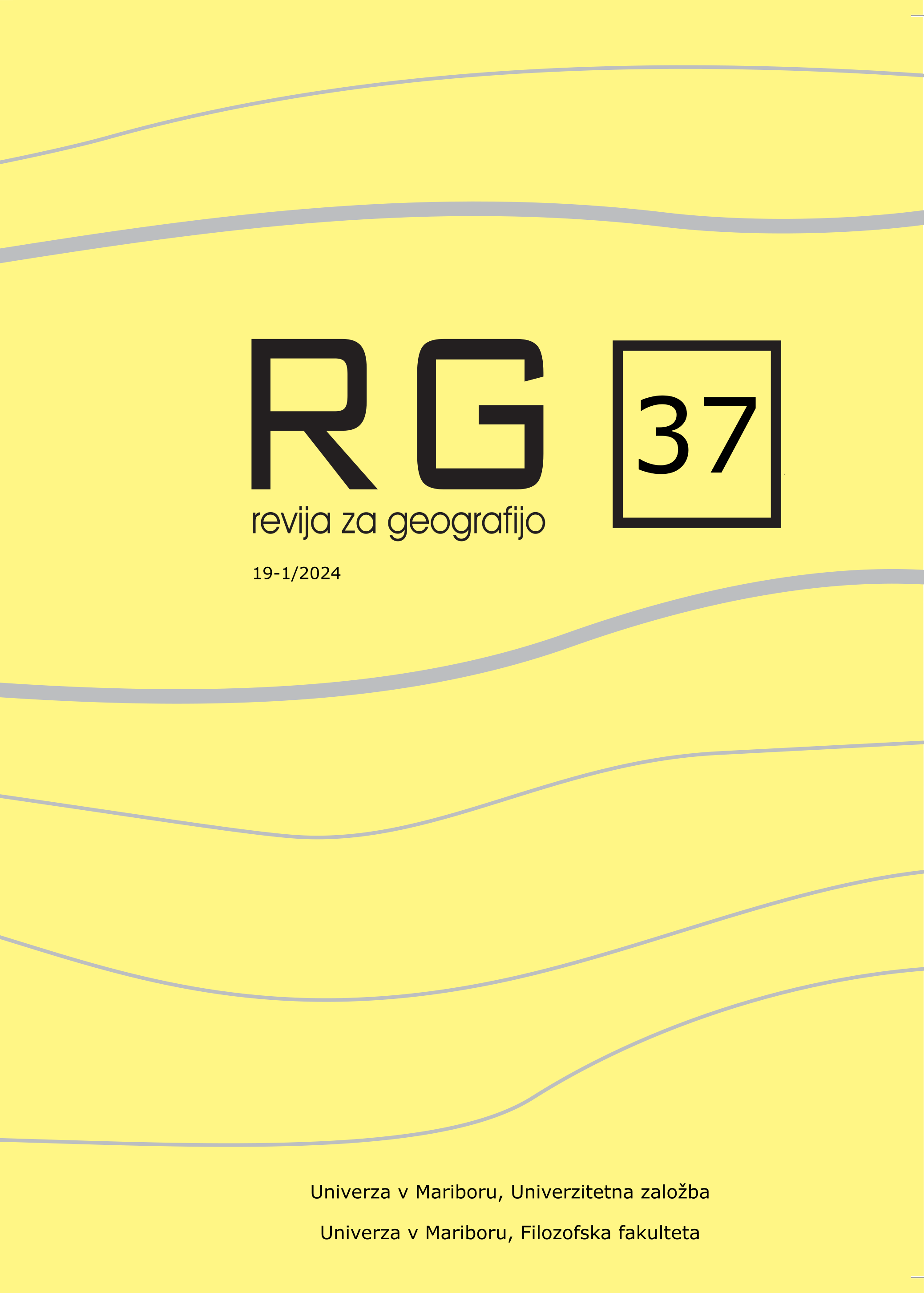Uvodnik: Podnebna odpornost – kaj, kako in zakaj?
Povzetek
Podnebna odpornost je ključen koncept v soočanju s podnebnimi spremembami. Definicije odpornosti se razlikujejo glede na kontekst in področje, a skupni imenovalec je sposobnost sistemov, da se soočijo z grožnjami, ohranijo osnovne funkcije in se prilagodijo na spremembe. Gre za zelo kompleksen pojem, saj podnebna odpornost zahteva prilagoditev družbenih, gospodarskih in okoljskih sistemov, ki so med seboj prepleteni, napake pa se hitro potencirajo in povzročijo več škode kakor koristi. Tako kot se med seboj razlikujejo grožnje, ki pretijo sistemom, tako se razlikujejo tudi pristopi k izgradnji podnebne odpornosti. Kljub razpoložljivim znanstvenim rešitvam izzive predstavljajo kompleksnost sistemov, konflikti različnih interesov in uspešno mednarodno sodelovanje. Uspešno prilagajanje je ključno za trajnostno prihodnost na segrevajočem se planetu.
Prenosi
Literatura
Center for Climate and Energy Solutions. (2019). What is climate resilience and why does it matter? https://www.c2es.org/wp-content/uploads/2019/04/what-is-climate-resilience.pdf
Davidovič, D. in Ivajnšič, D. (2024). Evaluating Relative Heat Stress in the Natura 2000 Site Kras Under Different Climate Change Scenarios: A Case Study Utilizing Multiscale Geographically Weighted Regression. Revija za geografijo, 19(1). https://doi.org/10.18690/rg.19.1.4442
European Environment Agency. (2024). European Climate Risk Assessment. Publications Office of the European Union. https://data.europa.eu/doi/10.2800/8671471
Fu, H. in Waltman, L. (2021). A large-scale bibliometric analysis of global climate change research between 2001 and 2018. Climatic Change, 170(3), 1–21. https://doi.org/10.48550/arXiv.2107.08214
Holling, C. S. in Goldberg, M. A. (1971). Ecology and Planning. Journal of the American Institute of Planners, 37(4), 221–230. https://doi.org/10.1080/01944367108977962
IPCC. (2014). Summary for policymakers. In: Climate Change 2014: Impacts, Adaptation, and Vulnerability. Part A: Global and Sectoral Aspects. Contribution of Working Group II to the Fifth Assessment Report of the Intergovernmental Panel on Climate Change. Field, C.B., V.R. Barros, D.J. Dokken, K.J. Mach, M.D. Mastrandrea, T.E. Bilir, M. Chatterjee, K.L. Ebi, Y.O. Estrada, R.C. Genova, B. Girma, E.S. Kissel, A.N. Levy, S. MacCracken, P.R. Mastrandrea, and L.L. White (ur.). Cambridge University Press, Cambridge, ZK in New York, NY, ZDA. https://www.ipcc.ch/site/assets/uploads/2018/03/ar5_wgII_spm_en-1.pdf
IPCC. (2018). Global Warming of 1.5°C. An IPCC Special Report on the impacts of global warming of 1.5°C above pre-industrial levels and related global greenhouse gas emission pathways, in the context of strengthening the global response to the threat of climate change, sustainable development, and efforts to eradicate poverty. Masson-Delmotte, V., P. Zhai, H.-O. Pörtner, D. Roberts, J. Skea, P.R. Shukla, A. Pirani, W. Moufouma-Okia, C. Péan, R. Pidcock, S. Connors, J.B.R. Matthews, Y. Chen, X. Zhou, M.I. Gomis, E. Lonnoy, T. Maycock, M. Tignor, and T. Waterfield (ur.). Cambridge University Press, Cambridge, ZK in New York, NY, ZDA. https://www.ipcc.ch/site/assets/uploads/sites/2/2022/06/SR15_Full_Report_HR.pdf
Marrakesh Partnership for Global Climate Action. (2021). Climate resilience: Vision and summary. https://unfccc.int/sites/default/files/resource/ExecSumm_Resilience_0.pdf
McBean, G. in Rodgers, C. (2010). Climate hazards and disasters: the need for capacity building. Wiley Interdisciplinary Reviews: Climate Change, 1(6), 871–884. https://doi.org/10.1002/wcc.77
Meerow, S., Newell, J. P. in Stults, M. (2016). Defining urban resilience: A review. Landscape and Urban Planning, 147, 38–49. https://doi.org/10.1016/j.landurbplan.2015.11.011
O'Brien, K. in Sygna, L. (2013). Responding to climate change: The three spheres of transformation. Proceedings of Transformation in a Changing Climate, 19-21 June 2013, Oslo, Norway. University of Oslo, Oslo, Norveška, 16–23. https://www.researchgate.net/publication/309384186_Responding_to_climate_change_The_three_spheres_of_transformation
Pajk, B., in Dolejši, N. (2024). Vpliv podnebnih sprememb na mestno drevnino: primer Velenja 2008–2023. Revija za geografijo, 19(1). https://doi.org/10.18690/rg.19.1.4445
Schipper, E.L.F., A. Revi, B.L. Preston, E.R. Carr, S.H. Eriksen, L.R. Fernandez-Carril, B.C. Glavovic, N.J.M. Hilmi, D. Ley, R. Mukerji, M.S. Muylaert de Araujo, R. Perez, S.K. Rose in Singh, P.K. (2022). Climate Resilient Development Pathways. V Climate Change 2022: Impacts, Adaptation and Vulnerability. Contribution of Working Group II to the Sixth Assessment Report of the Intergovernmental Panel on Climate Change H.-O. Pörtner, D.C. Roberts, M. Tignor, E.S. Poloczanska, K. Mintenbeck, A. Alegría, M. Craig, S. Langsdorf, S. Löschke, V. Möller, A. Okem, B. Rama (ur.). Cambridge University Press, Cambridge, ZK in New York, NY, ZDA, 2655–2807. https://doi.org/10.1017/9781009325844.027
Silan, M. (2024). Estetika proti ekologiji: Kompleksnost ohranjanja drevoreda v Pivoli. Revija za geografijo, 19(1). DOI: https://doi.org/10.18690/rg.19.1.4809
Urh, V. (2024). Mobilnostni načrt za Splošno bolnišnico Novo mesto: koraki k zmanjševanju okoljskih vplivov in povečanju podnebne odpornosti. Revija za geografijo, 19(1). https://doi.org/10.18690/rg.19.1.4322
Vovk, A. (2024). Ekosistemske storitve v bioregiji Dravinjska dolina. Revija za geografijo, 19(1).https://doi.org/10.18690/rg.19.1.4332
Copyright (c) 2024 Erik Kralj

To delo je licencirano pod Creative Commons Priznanje avtorstva 4.0 mednarodno licenco.
